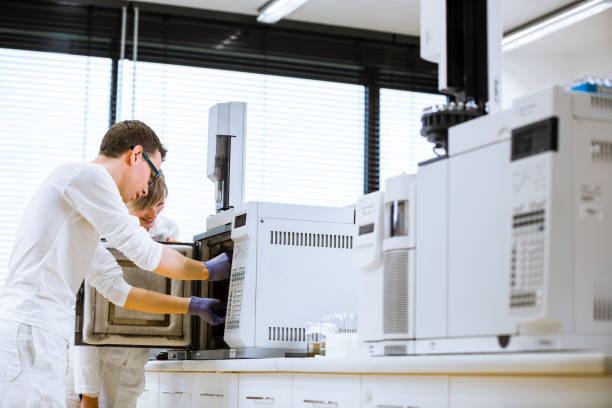Chloroprene

Parameter Type: Drinking Water Testing for Volatiles
Parameter Name: Chloroprene
What it is and Where it Comes From:
Chloroprene is the common name for 2-chlorobuta-1,3-diene with the chemical formula CH2=CCl−CH=CH2. Chloroprene is a colorless volatile liquid, almost exclusively used as a monomer for the production of the polymer polychloroprene, a type of synthetic rubber. Polychloroprene is better known as Neoprene, the trade name given by DuPont. Chloroprene is not known to occur naturally. It is not widely distributed in the environment due its reactivity and its use at a limited number of facilities worldwide. Drinking water testing gives you several benefits like peace of mind, identifying contaminants in your water, and insight into health concerns. Safe Home offers Laboratory drinking water testing kits for chloroprene, allowing you to collect your water sample and ship it directly to our EPA-Certified Laboratory. This platform of drinking water testing for chloroprene will give you an accurate level based on the lowest level of a parameter our instruments can detect (Method Detection Level). Safe Home drinking water testing for volatiles can be used for city and well water supplies. Drinking water testing should be done any time you notice a significant change in your water quality.
Health Effects:
Symptoms reported from acute (short-term) human exposure to high concentrations of chloroprene include giddiness, headache, irritability, dizziness, insomnia, fatigue, respiratory irritation, cardiac palpitations, chest pains, nausea, gastrointestinal disorders, dermatitis, temporary hair loss, conjunctivitis, and corneal necrosis. Workers exposed to chloroprene long-term experience symptoms like fatigue, chest pains, giddiness, irritability, dermatitis, and hair loss.
Solutions to Contaminant Levels:
After drinking water testing, what are my treatment options? Reverse osmosis and active carbon can reduce chloroprene in drinking water. A filter with granular activated carbon (GAC) is a proven option to remove certain chemicals, particularly organic chemicals, from water. GAC filters can be used to remove chemicals that give objectionable odors or tastes to water such as hydrogen sulfide (rotten eggs odor) or chlorine. Reverse osmosis is a process that removes foreign contaminants, solid substances, large molecules, and minerals from water by using pressure to push it through specialized membranes. Here’s how reverse osmosis works. Unlike osmosis, which is a passive process, reverse osmosis requires external force (pressure) to work. Pressure is applied to a highly concentrated solute solution, such as salt water, to pass through a membrane to a lower concentrate solution. The membrane allows water to flow through but blocks out larger molecules, like contaminants. The reverse osmosis process leaves higher concentrations of solute on one side and only the solvent, or freshwater, on the other. Who do I need to contact to find out more information about water quality in my area? Every community water supplier must provide an annual report to its customers, known as a Consumer Confidence Report (CCR). The report provides information on your local drinking water quality, including the water’s source, contaminants found in the water, and how consumers can get involved in protecting drinking water. How often does the local public water system preform drinking water testing? Frequency of drinking water testing depends on the number of people served, the type of water source, and types of contaminants. Certain contaminants are tested more frequently than others, as established by the Safe Drinking Water Act. You can find out about levels of regulated contaminants in your treated water for the previous calendar year in your annual Consumer Confidence Report (CCR).


